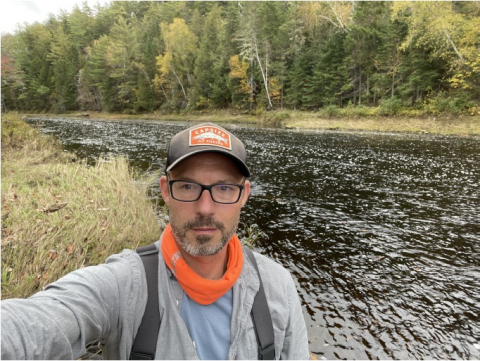Mardi 28 Novembre 2023
Conférence dans le cadre des séminaires en sciences de la vie
Le professeur associé, Josh Kurek, au département de géographie et environnement de Mount Allison University, offre une conférence sous le thème "Connections between watersheds, lake sediments, and brook trout to inform on legacy DDT pollution". le vendredi 1er décembre 2023 de 12h à 13h, au local A102, Rémi-Rossignol.
Veuillez noter que cette conférence se tiendra en anglais.
Le conférencier :
Dr. Josh Kurek is an Associate Professor at Mount Allison University in the Department of Geography and Environment. He earned a PhD in Biology at the University of New Brunswick followed by postdoctoral
training at
Queen’s University. Since 2015, Kurek has led the Environmental Change & Aquatic
Biomonitoring (ECAB) Laboratory in Sackville. His research program includes aspects of
aquatic science, paleolimnology, and environmental monitoring of lake, wetland,
and river ecosystems. Kurek is particularly interested in studying
the long-term responses of aquatic ecosystems to environmental
stressors, such as pollution and climate change. Ecological recovery
from stressors in an ever-changing world is also a research focus of
Kurek’s lab. This often involves recognizing how the structure and function
of freshwater ecosystems has changed across time, mostly at the scale
of decades to centuries. He enjoys mentoring student researchers
and helping to develop their knowledge and interests related to environmental
science.
Résumé de la conférence :
Global production and diversification of
synthetic chemicals, such as pesticides, have outpaced most
well-recognized agents of global change since ~1970. Yet, synthetic
chemicals as drivers of ecosystem change remain understudied in ecology.
Forestry stakeholders in New Brunswick ran arguably one of the world’s
largest aerial insecticide spray programs between 1952-1993 to control outbreaks of
Eastern Spruce Budworm. At least one insecticide was applied to 97% of the
province’s forests. DDT was applied to ~52% of the province and
persists today as mostly DDE and DDD in soils, lakes, and biota. Are legacy effects of
DDTs important to modern ecosystem structure and function? We studied seven dimictic
lakes using approaches common to paleolimnology and environmental monitoring to
investigate legacy insecticides. Sediments, brook trout, macroinvertebrates,
and zooplankton were used to assess contaminant levels and reconstruct aquatic food
webs. Sediments exceeded guidelines by ~450 times at the most impacted lake. We also
observed DDTs up to ~14 times higher in brook trout from lakes where DDT applications by
airplane occurred. Brook trout now exceed CCME guidelines, despite five decades since
DDTs were last used. A correlation between lake sediments and brook trout DDT levels
suggests that sediments are an important contemporary source, not sink, of legacy DDT and
its toxic metabolites.
Ultimately, our goal is to
link processes in the watershed, lake, and food web to understand risks of
contaminants in remote New Brunswick
lakes.
Retourner aux nouvelles







